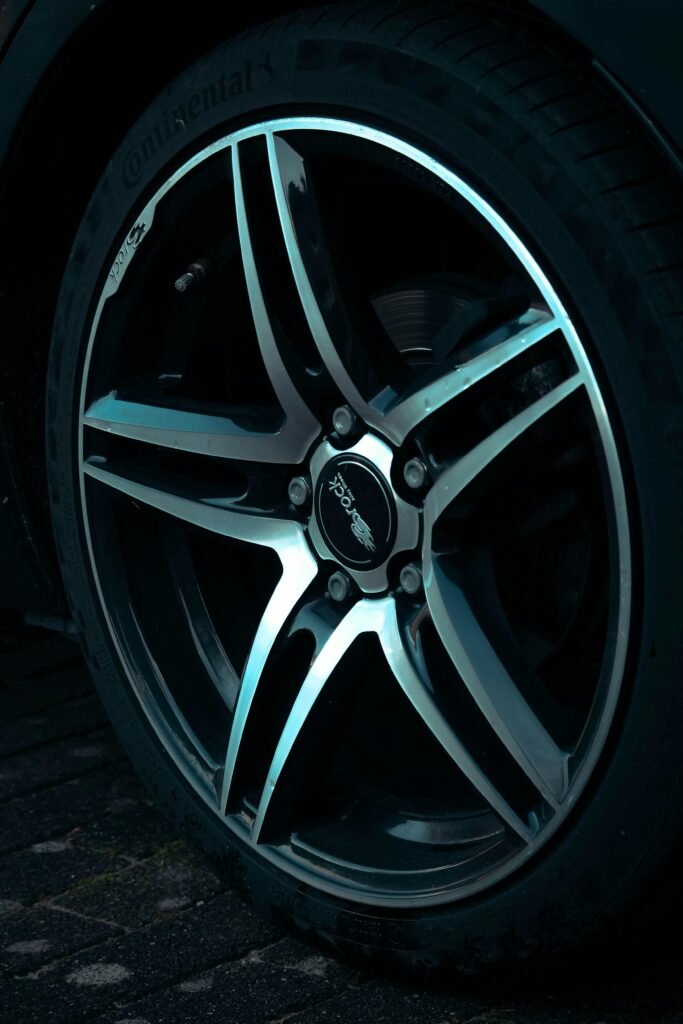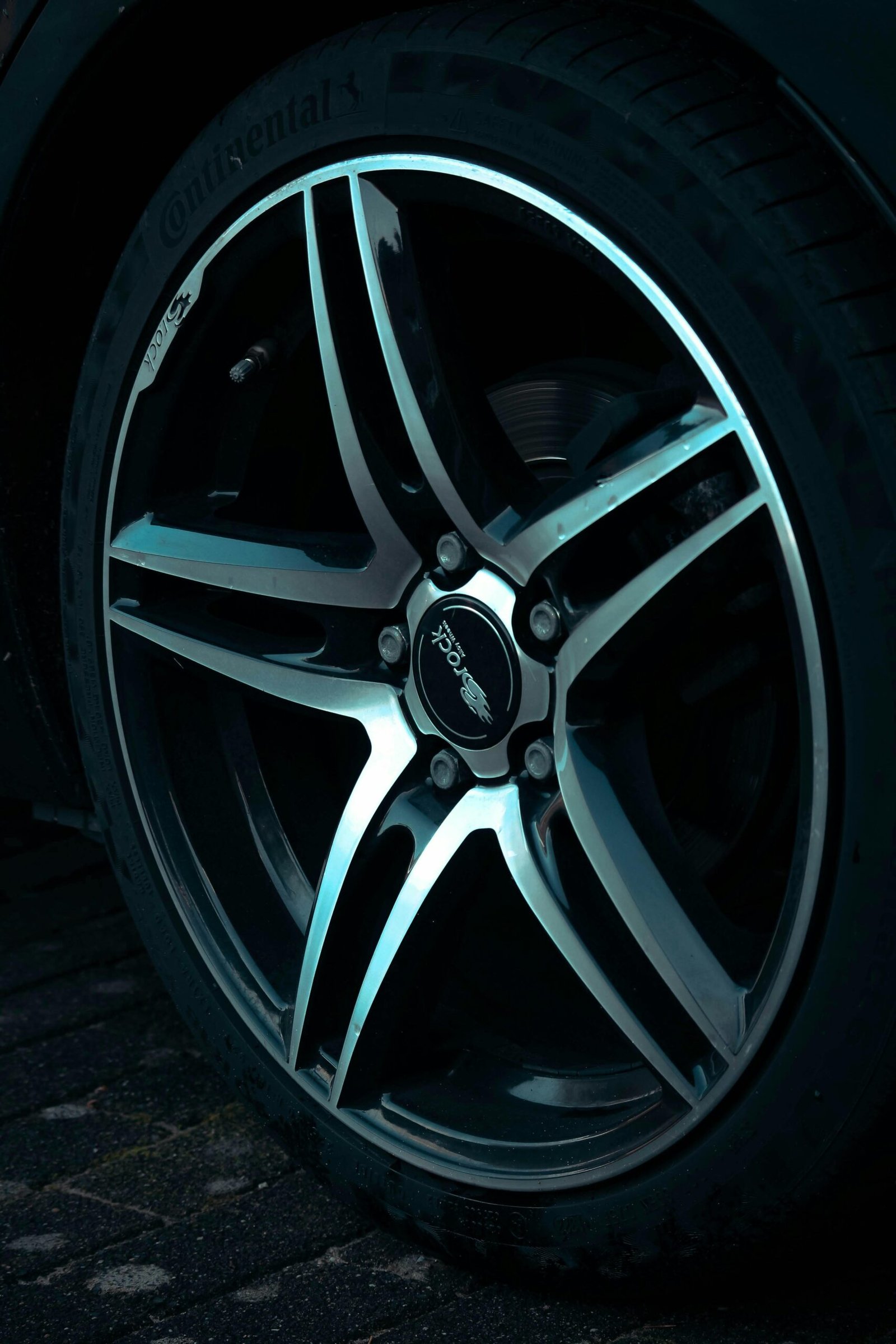Imagine the thrill of effortlessly navigating the open road with utmost precision and control. Picture yourself behind the wheel, smoothly gliding around every turn and corner. Now, imagine experiencing all of this while driving a vehicle equipped with 18 inch wheels. These wheels offer more than just stunning aesthetics; they provide improved handling that can truly transform your driving experience. Whether you’re cruising along the highway or tackling winding roads, the increased size of 18 inch wheels allows for enhanced grip and stability, ensuring a safer and more enjoyable ride. Get ready to elevate your driving experience and feel the difference with 18 inch wheels.

This image is property of images.pexels.com.
Benefits of 18 Inch Wheels
When it comes to upgrading your car’s wheels, opting for 18 inch wheels can bring a multitude of benefits to enhance your driving experience. From enhanced stability to better braking performance, here are some advantages that come with fitting your vehicle with 18 inch wheels.
Enhanced Stability
One of the primary advantages of 18 inch wheels is the increased stability they provide. The larger diameter of these wheels allows for a larger contact patch between the tires and the road surface. This means that there is more surface area of the tire in contact with the ground, resulting in improved stability, especially when driving at high speeds or maneuvering around sharp corners.
Improved Cornering
If you enjoy taking your vehicle for spirited drives or tackling challenging roads, you’ll appreciate the improved cornering ability that 18 inch wheels offer. With reduced tire sidewall flex compared to smaller wheels, you can expect enhanced lateral grip. This means that when you navigate tight corners, your tires will have a firmer grip on the road, allowing you to maintain better control and tackle corners with confidence.
Better Braking Performance
18 inch wheels can also significantly improve your car’s braking performance. With their larger diameter, these wheels provide increased stopping power, allowing you to bring your vehicle to a halt more effectively. Additionally, the wider tires that typically accompany 18 inch wheels offer improved traction and grip, resulting in shorter braking distances, making them a great choice for safety-conscious drivers.
Increased Grip and Traction
If you often find yourself driving in adverse weather conditions or challenging terrains, opting for 18 inch wheels can greatly enhance your vehicle’s grip and traction. The wider tires that come with these wheels provide improved tire-to-road contact, offering better handling in wet or snowy conditions. This can give you the confidence to navigate through slippery roads with ease, making your journeys safer and more enjoyable.
Factors to Consider when Choosing 18 Inch Wheels
While the benefits of 18 inch wheels are clear, it’s important to consider several factors before making a purchase. By taking into account wheel width, aspect ratio, offset, weight, material, and compatibility with your vehicle, you can ensure that you choose the perfect set of 18 inch wheels that meet your specific needs.
Wheel Width
The wheel width refers to the distance between the inner and outer edges of the wheel. It plays a crucial role in determining the performance characteristics of your vehicle. Narrow wheels offer improved fuel efficiency and a smoother ride, while wider wheels provide enhanced stability and better handling. Consider your driving preferences and the recommendations of your vehicle’s manufacturer when choosing the appropriate wheel width for your 18 inch wheels.
Aspect Ratio
The aspect ratio is the ratio of the tire’s sidewall height to its section width. It influences the overall height and performance of the tire. Lower aspect ratios offer a sportier look and improved handling, while higher aspect ratios provide better ride comfort and increased sidewall flexibility. Consider the balance between performance and ride quality when selecting the aspect ratio for your 18 inch wheels.
Offset
The wheel offset refers to the distance between the wheel’s mounting surface and its centerline. It has a significant impact on the handling and stability of your vehicle. A positive offset pushes the wheel closer to the car’s suspension, resulting in improved stability but reduced clearance, especially when fitting larger tires. A negative offset pushes the wheel away from the suspension, providing more clearance but potentially compromising stability. Zero offset places the wheel exactly in the center, offering a balanced performance. Choose the offset that best suits your driving style and the compatibility of your vehicle.
Weight
The weight of your wheels can have a substantial impact on your car’s acceleration, handling, and fuel efficiency. Lighter wheels reduce unsprung weight, improving the suspension’s ability to keep the tires in contact with the road surface, resulting in better handling and a smoother ride. Additionally, lighter wheels can enhance your vehicle’s acceleration and fuel efficiency, so consider the weight of the 18 inch wheels you choose, aiming for a balance between performance and efficiency.
Material
The material of your wheels can affect their strength, durability, and overall performance. Common wheel materials include steel, aluminum alloy, and carbon fiber. Steel wheels are typically the most affordable option but may be heavier. Aluminum alloy wheels offer a great balance of strength, weight, and durability. Carbon fiber wheels are incredibly lightweight and strong, but they can be expensive. Consider your budget and the performance requirements of your vehicle when choosing the material for your 18 inch wheels.
Compatibility with Your Vehicle
Before purchasing 18 inch wheels, it’s essential to ensure that they are compatible with your specific vehicle. Check the bolt pattern, hub diameter, and any wheel size restrictions specified by your vehicle’s manufacturer. This will ensure a proper fit and proper performance when you swap out your current wheels for the 18 inch set.
Enhanced Stability with 18 Inch Wheels
The enhanced stability offered by 18 inch wheels is a significant advantage that can transform your driving experience. Let’s take a closer look at some of the factors that contribute to this improved stability.
Larger Contact Patch
With 18 inch wheels, you can enjoy a larger contact patch between your tires and the road surface. The larger diameter of these wheels allows for more surface area of the tire to be in contact with the ground. This increased contact patch results in improved stability, especially when driving at higher speeds or navigating challenging corners.
Reduced Sidewall Flex
Compared to smaller wheels, 18 inch wheels typically have less flexible sidewalls. This reduced sidewall flex contributes to enhanced stability, as there is less deformation of the tire during cornering or sudden maneuvers. The rigidity of the sidewalls ensures that the tires maintain better contact with the road, providing you with a more stable driving experience.
Improved Road Feedback
When driving with 18 inch wheels, you’ll also experience improved road feedback. The larger wheels allow you to feel the road surface more effectively, giving you a better understanding of how your vehicle is interacting with the road. This increased feedback allows you to make more precise adjustments to your driving, ultimately improving your stability and control.
Reduced Body Roll
Body roll refers to the side-to-side movement of a vehicle’s body when cornering. With 18 inch wheels, you can expect reduced body roll compared to smaller wheels. The wider tires and increased stability provided by the larger diameter wheels help to minimize body roll, allowing you to maintain better control and stability through corners. This reduction in body roll enhances your overall driving experience, making your journeys more comfortable and enjoyable.
Improved Cornering with 18 Inch Wheels
If you’re a driving enthusiast who loves tackling corners with precision and control, upgrading to 18 inch wheels can greatly improve your overall cornering performance. Here are some factors that contribute to the improved cornering capabilities of these wheels.
Reduced Tire Sidewall Flex
One of the key advantages of 18 inch wheels is the reduced sidewall flex compared to smaller wheels. The shorter sidewall of these wheels provides increased rigidity, allowing the tires to maintain better contact with the road during cornering. This reduction in sidewall flex translates to improved control and stability, giving you the confidence to push your vehicle through corners with ease.
Increased Lateral Grip
Lateral grip refers to the ability of the tires to maintain traction when making sharp turns. With 18 inch wheels, you’ll notice an increase in lateral grip. The wider tires that typically accompany 18 inch wheels provide a larger surface area in contact with the road, resulting in improved traction and grip while cornering. This increased lateral grip allows you to take corners at higher speeds without sacrificing control or stability.
Enhanced Steering Response
When you upgrade to 18 inch wheels, you’ll experience improved steering response. The reduced sidewall flex and increased rigidity of the tires result in more precise and direct feedback from the road to your steering wheel. This enhanced steering response not only makes your driving experience more engaging but also allows you to make more accurate steering inputs, ensuring precise control during cornering.
Reduced Understeer or Oversteer
Understeer and oversteer are handling characteristics that can affect your vehicle’s cornering performance. Understeer occurs when the front tires lose traction and the vehicle tends to push wide in a corner. Oversteer, on the other hand, is when the rear tires lose traction, causing the rear end of the vehicle to swing out. With 18 inch wheels, you’ll experience reduced understeer or oversteer due to the enhanced grip and stability they provide. This balanced handling ensures that your vehicle stays planted and controlled through corners.

This image is property of images.pexels.com.
Better Braking Performance with 18 Inch Wheels
Braking performance is a critical aspect of driving safety, and 18 inch wheels can greatly enhance your vehicle’s braking capabilities. Let’s explore how fitting your car with these wheels can improve your braking performance.
Increased Stopping Power
18 inch wheels offer increased stopping power compared to smaller wheels. The larger diameter provides more leverage for the brakes, allowing them to generate greater force when stopping the vehicle. This increased stopping power can significantly reduce braking distances and provide you with more confidence behind the wheel, especially in emergency situations.
Shorter Braking Distances
With 18 inch wheels, you can expect shorter braking distances. The wider tires that typically come with these wheels offer improved traction and grip, allowing for more effective deceleration. This means that your vehicle can come to a halt quicker when you apply the brakes, enhancing your safety and giving you peace of mind on the road.
Improved Heat Dissipation
Braking generates a significant amount of heat, and excessive heat can lead to brake fade, which reduces the effectiveness of your brakes. 18 inch wheels can help with improved heat dissipation, thanks to their larger surface area and increased airflow around the brakes. This improved heat dissipation helps to keep the brakes cooler, reducing the risk of brake fade and maintaining optimal braking performance even during demanding driving situations.
Reduced Brake Fade
Brake fade occurs when the brakes’ performance deteriorates due to excessive heat buildup. By upgrading to 18 inch wheels, you can reduce the likelihood of brake fade. The increased heat dissipation provided by these wheels helps to keep the brakes operating at lower temperatures, preserving their performance and offering consistent braking power, allowing you to rely on your brakes even during prolonged or aggressive braking maneuvers.
Increased Grip and Traction with 18 Inch Wheels
Driving in challenging road conditions requires excellent grip and traction, and 18 inch wheels can provide just that. Here are some ways these wheels help enhance your vehicle’s grip and traction.
Wider Tires
With 18 inch wheels, you can enjoy wider tires, which offer increased grip and traction. The wider contact patch provided by these tires allows for a larger area in contact with the road, resulting in enhanced traction and grip, especially when accelerating, cornering, or braking. This improved contact with the road surface provides you with the confidence to tackle various driving conditions with ease.
Improved Tire-to-Road Contact
18 inch wheels offer improved tire-to-road contact, thanks to their larger diameter and wider tires. This improved contact allows the tires to better grip the road surface, transmitting the engine’s power more efficiently to the ground. Whether you’re accelerating on dry pavement or negotiating a challenging off-road terrain, the increased tire-to-road contact offered by 18 inch wheels ensures optimal grip and traction.
Enhanced Maneuverability
With increased grip and traction, 18 inch wheels enhance your vehicle’s maneuverability. The added stability and control provided by these wheels give you the confidence to navigate through tight spaces, execute precise turns, and handle sudden lane changes with ease. This maneuverability not only improves your driving experience but also contributes to overall safety on the road.
Better Handling in Wet or Snowy Conditions
Driving in wet or snowy conditions can be challenging, but 18 inch wheels can greatly improve your vehicle’s handling in such situations. The wider tires associated with these wheels help to disperse water or snow more effectively, reducing the risk of hydroplaning or getting stuck in slippery conditions. The enhanced grip and traction offered by 18 inch wheels provide you with the necessary control and stability to confidently navigate through adverse weather conditions.

This image is property of images.pexels.com.
Wheel Width and Its Impact on Control
When choosing 18 inch wheels, one of the crucial factors to consider is the wheel width. Let’s explore the importance of choosing the right wheel width and the effects of narrow and wide wheels on handling.
Importance of Choosing the Right Wheel Width
Selecting the appropriate wheel width for your 18 inch wheels is essential for optimal control and performance. The right wheel width can enhance your vehicle’s stability, handling, and overall driving experience. It’s important to strike the right balance between narrow and wide wheels, considering the specific characteristics of your vehicle and your driving preferences.
Effects of Narrow and Wide Wheels on Handling
Narrow wheels offer some advantages in terms of fuel efficiency and a smoother ride. These wheels tend to have less sidewall flex, providing increased stability and improved steering response. However, narrow wheels may compromise traction and grip, especially during aggressive cornering or acceleration.
On the other hand, wide wheels offer several performance benefits. They provide a larger contact patch, resulting in improved traction and grip. The increased tire-to-road contact can enhance your vehicle’s stability and handling, giving you confidence in various driving situations.
Finding the Optimal Wheel Width for Your Vehicle
To find the optimal wheel width for your vehicle, consider the recommendations from your vehicle’s manufacturer. They often provide guidelines on the range of wheel widths that are suitable for your specific make and model. Additionally, take into account your driving preferences. If you prioritize comfort and fuel efficiency, a slightly narrower wheel may be the right choice. However, if you value performance and enhanced grip, a wider wheel may suit your needs better. Strike the right balance between these factors to ensure optimal control and performance with your 18 inch wheels.
Aspect Ratio and Its Influence on Performance
The aspect ratio of your tires is another important consideration when selecting 18 inch wheels. Let’s explore what aspect ratio means and the effects of low and high aspect ratios on control and performance.
Understanding Aspect Ratio
Aspect ratio refers to the ratio of the tire’s sidewall height to its section width. For example, an aspect ratio of 40 means that the sidewall height is 40% of the tire’s section width. The aspect ratio affects the overall height of the tire and has an impact on the performance characteristics of your vehicle.
Effects of Low and High Aspect Ratios on Control
Low aspect ratios, such as 30 or lower, are commonly associated with sports cars and high-performance vehicles. These tires have shorter sidewalls, which enhances your control and handling, especially during aggressive cornering or high-speed maneuvers. However, low aspect ratio tires may sacrifice ride comfort due to their reduced flexibility.
Alternatively, high aspect ratio tires, such as 60 or higher, offer a more comfortable ride by providing increased sidewall flexibility. These tires absorb bumps and imperfections on the road, resulting in a smoother driving experience. However, they may compromise steering response and overall handling.
Choosing the Appropriate Aspect Ratio for Your Needs
Choosing the appropriate aspect ratio for your 18 inch wheels depends on your driving preferences and the characteristics you value in your vehicle. If you prioritize performance and sportiness, a lower aspect ratio may suit your needs. However, if ride comfort and a smoother driving experience are your main considerations, a higher aspect ratio may be the better choice. Consider the trade-offs between performance and comfort to find the aspect ratio that aligns with your needs and preferences.
Offset and Its Effect on Handling
Understanding wheel offset is crucial when selecting 18 inch wheels. The offset plays a significant role in the handling and stability of your vehicle. Let’s define wheel offset and explore the impact of positive, negative, and zero offsets.
Defining Wheel Offset
Wheel offset refers to the distance between the wheel’s mounting surface and its centerline, measured in millimeters. It determines how the wheel sits in relation to the car’s suspension and impacts various aspects of handling and stability.
Positive, Negative, and Zero Offsets
A positive offset means that the mounting surface is closer to the outside of the wheel, creating more clearance between the wheel and the suspension components. This type of offset improves stability but may reduce clearance for larger tires.
A negative offset, on the other hand, means that the mounting surface is closer to the inside of the wheel, pushing the wheel away from the car’s suspension. This type of offset can provide more clearance for larger tires but may compromise stability.
A zero offset places the mounting surface exactly at the centerline of the wheel. This offset offers a balanced performance, allowing for a combination of improved stability and sufficient clearance, making it a popular choice for many vehicles.
Impact of Offset on Steering Response and Stability
The offset of your 18 inch wheels has a direct impact on the steering response and stability of your vehicle. A properly chosen offset can help optimize these aspects. A positive offset generally enhances stability, reducing the risk of wheel wobble or instability during turns. However, it may limit your ability to fit wider tires or larger brake components.
A negative offset can provide more clearance, allowing for larger tires or aftermarket brake kits. However, it may adversely affect stability and steering response, potentially causing the wheels to stick out too far or reducing the turning circle of your vehicle.
Consider the specific requirements and limitations of your vehicle when selecting the offset for your 18 inch wheels. Aim for a balance between stability, clearance, and performance to ensure optimal control and safety on the road.
Other Factors to Consider for Optimal Control
In addition to wheel width, aspect ratio, and offset, several other factors can contribute to achieving optimal control with your 18 inch wheels. Let’s explore the importance of wheel weight, different wheel materials, and considering suspension modifications for a well-rounded upgrade.
Wheel Weight and Its Impact on Acceleration and Handling
The weight of your wheels can significantly impact the acceleration and handling characteristics of your vehicle. Heavy wheels increase unsprung weight, which is the weight that is not supported by the vehicle’s suspension. This additional weight can impair your vehicle’s acceleration and handling, compromising its overall performance.
Choosing lighter wheels can help reduce unsprung weight, enhancing the suspension’s ability to keep the wheels in contact with the road surface. Lighter wheels contribute to improved handling, better acceleration, and enhanced fuel efficiency. Consider the weight of the 18 inch wheels you choose to strike the right balance between performance and efficiency, aiming for a lighter option when possible.
Different Wheel Materials and Their Pros and Cons
Wheel materials also play a significant role in the overall performance and characteristics of your 18 inch wheels. Common materials include steel, aluminum alloy, and carbon fiber.
Steel wheels are typically the most affordable option. They provide strength and durability but can be heavier than other materials, potentially impacting acceleration and handling. Steel wheels are often a practical choice for those seeking a budget-friendly option with reliability.
Aluminum alloy wheels are popular due to their balanced characteristics. They offer strength, durability, and lighter weight compared to steel wheels. Aluminum alloy wheels strike a good balance between performance, fuel efficiency, and cost-effectiveness, making them a common choice for many drivers.
Carbon fiber wheels are the lightest and strongest option available. These wheels offer the highest performance characteristics but come with a higher price tag. Carbon fiber wheels are commonly found in high-performance sports cars and racing applications, where every pound of weight reduction translates to improved performance.
Consider your budget, driving preferences, and the specific requirements of your vehicle when choosing the material for your 18 inch wheels. Alloys with a blend of strength, durability, and lightweight properties are often the best choice for most drivers.
Compatibility of 18 Inch Wheels with Your Specific Vehicle
Before making a final decision on your 18 inch wheels, it’s crucial to ensure that they are compatible with your specific vehicle. Different vehicles have unique requirements in terms of bolt pattern, hub diameter, and any wheel size restrictions set by the manufacturer. Failing to choose 18 inch wheels that are compatible with your vehicle may result in improper fitment, reduced performance, or even potential safety issues.
Refer to your vehicle’s manual or consult with a knowledgeable professional to determine the correct specifications for your 18 inch wheels. By confirming compatibility, you can avoid any issues and ensure a proper fitment that maximizes the benefits of upgrading to these wheels.
Considering Suspension Modifications for Optimal Control
If you’re aiming for optimal control and performance with your 18 inch wheels, considering suspension modifications may be worth exploring. Lowering springs, aftermarket shock absorbers, or coilover kits can improve the handling characteristics of your vehicle, allowing you to fully harness the potential of your upgraded wheels.
However, it’s important to ensure that any suspension modifications are done correctly by professionals who understand your specific vehicle’s requirements. Proper modifications can enhance control and performance, but improper modifications can negatively impact ride quality, comfort, and even safety.
Consult with experienced professionals or suspension experts to explore the potential suspension modifications that may complement your 18 inch wheels. By fine-tuning your vehicle’s suspension, you can achieve optimal control and an even more engaging driving experience.
In conclusion, upgrading to 18 inch wheels brings numerous benefits to enhance your driving experience. From enhanced stability, improved cornering, and better braking performance to increased grip and traction, these wheels offer a significant upgrade over smaller wheel options. When selecting 18 inch wheels, consider factors such as wheel width, aspect ratio, offset, weight, and material to ensure optimal control and performance. By making an informed decision and considering your specific vehicle’s requirements, you can enjoy the advantages that come with upgrading to 18 inch wheels, elevating your driving experience to new heights. Experience better control on the road and revel in the improved handling offered by 18 inch wheels!
